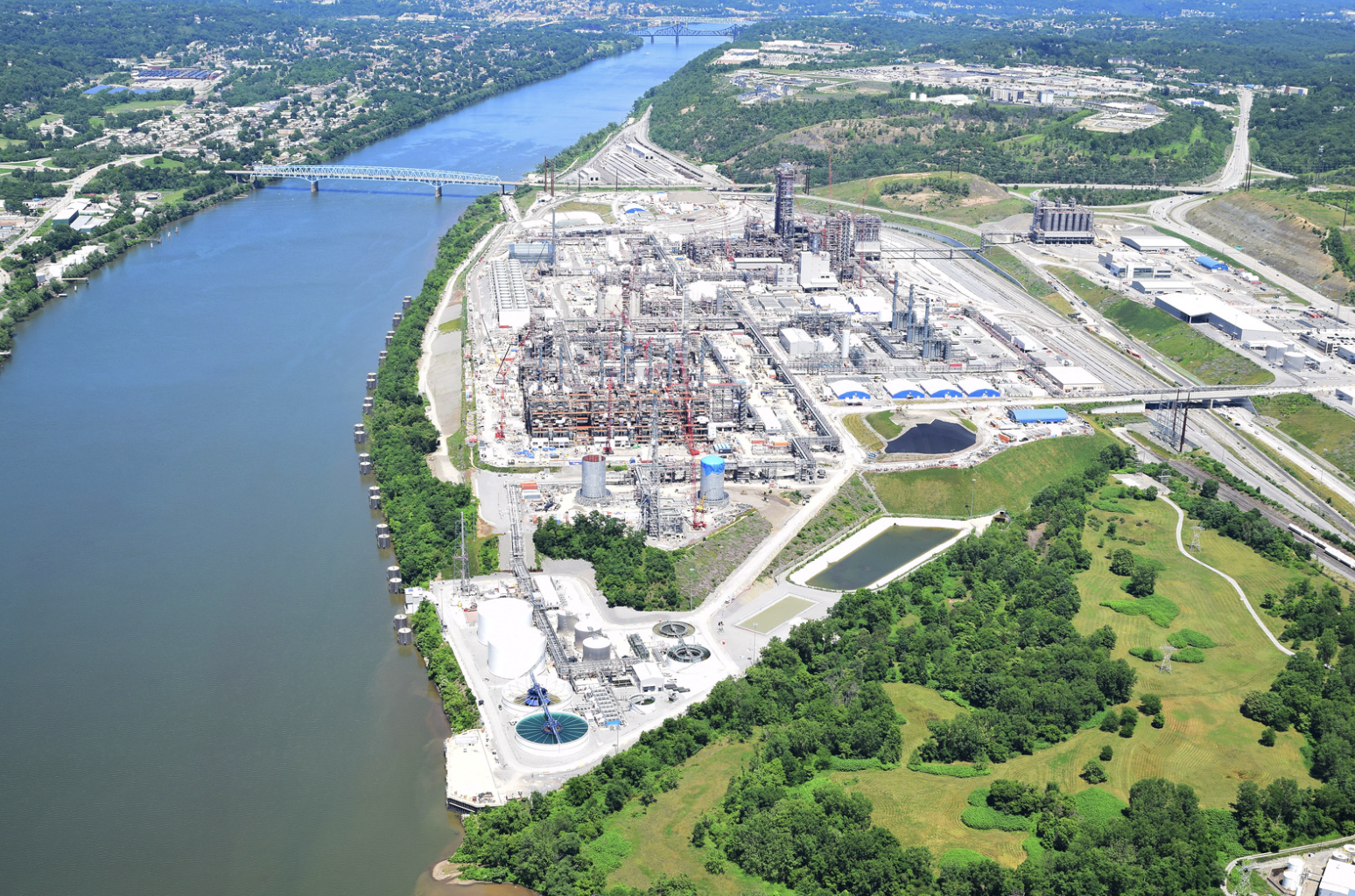A “Good Neighbor” Wishlist for Shell

Pittsburgh, PA (May 18, 2022) By late 2022 or early 2023, Shell’s Beaver County ethane cracker plant will be turning fracked gas into 1.6 million metric tons of plastic pellets per year. The facility was originally planned as the anchor for a vast “Petrochemical Hub” of four more crackers strewn across the Ohio River Valley. Each cracker plant would increase climate and plastic pollution and worsen air quality locally, all at the cost of residents’ health. At this point, plans for a second ethane cracker in Belmont County, Ohio, are on hold.
A decade ago when planning began, Executive Director Joe Minott first spoke out against Shell’s plant in a Beaver County Times opinion piece, and in 2014, the Council released a vital educational resource for residents’ protection: A 76-page Health Impacts Assessment of the petrochemical plant. In 2016, the Council shared with many residents a factsheet showing that, according to its permit, the plant would release up to 159 tons of fine particulate matter and 522 tons of volatile organic compounds (VOCs) annually. In 2018, the Council and Environmental Integrity Project won their two-year legal battle for flaring limits and a fenceline air monitoring system that will detect air pollution that travels outside the site boundary, and then make needed repairs. The Council was also successful in convincing Potter Township to include in its municipal permit for the plant better quality-of-life protections from lighting, noise, and traffic.
Still, this is not enough. The Council is now calling on Shell to live up to its claim of being a “good neighbor” by doing more to protect residents and the environment from pollution than what is legally required.
The Council is encouraging Beaver County and Southwest Pennsylvania residents to insist that Shell take the following actions:
1) For all non-routine incidents or emergency events such as flarings, spills or discharges, notify residents within a three-mile radius of the plant in real time. Promptly follow up with fully transparent, public reports on potential threats to health, safety or the environment. Issue fully transparent and timely public reports on how spills were disposed of, as well as any causal explanations and remedial actions taken.
2) For any accidental release into the Ohio River, notify in real time the nearby Center Township Water Authority in Beaver County, as well as across-the-river municipalities like Vanport and Midland with intakes near the plant’s outflows. Notify also the Pennsylvania Fish and Boat Commission and all downstream residents.
3) For any plant accident that poses a health, safety or environmental threat, notify in real time Beaver County’s Local Emergency Planning Committee (LEPC) and nearby municipal police departments.
Note: None of the above notifications were provided for the March 19, 2022 accident in which 2,500 gallons of sulfuric acid were spilled at the plant.
4) In order to quickly repair any leaks of organic compounds, use infrared cameras to detect leaks faster than required under the permits, or use infrared cameras for continuous or automated leak detection, since they would catch a leak faster than an inspection or possibly even the fenceline system.
5) Provide residents with a list of:
- Standard Operating Procedures (SOPs) for basic plant operations, such as those that might apply to sulfuric acid spills, ethane releases or coke fires.
- All emergency-response provisions.
6) Satisfactorily complete the commissioning-period “Exterior Lighting Study” as required by Potter Township’s Resolution No. 3-2017. This requirement was a result of the Council’s advocacy in following up with Potter Township to ensure it would require Shell to complete a post-construction lighting study, which is now underway. The study’s results, which cannot be publicly shared until December 2022, should answer the Council’s questions about whether the plant’s LED lights meet the recommendations of the International Dark Sky Association (darksky.org).
7) Publicly acknowledge and disclose information about the number of new frack wells it will take to supply ethane for feedstock to the plant, and over what time periods. Estimates are that the plant will require 1,000 new wells every 3 to 5 years. In addition, provide the number of compressor stations, pipelines, processing plants, injection wells and other infrastructure it will take to process ethane at the plant. Provide and disclose an analysis of the cumulative health risks and greenhouse gas contributions of all of this infrastructure.
8) Act boldly, given Shell’s support of the Paris agreement, to
- Publicly acknowledge the contribution of the plant and its supporting petrochemical buildout to climate change.
- Update the plant’s emission controls to proportionately reduce its greenhouse-gas emissions – or, at the very least, purchase offsets to account for these emissions.
- Refuse to invest in and waste resources on false climate solutions like carbon capture and storage.
For the sake of the residents onto whom it has externalized so many costs, Shell should honor each of these eight wishes. As the world’s 19th richest corporation, it can afford to honor them all.
For more information, contact Terrie Baumgardner, Outreach Coordinator and Beaver County resident, at tbaumgardner@cleanair.org.
Want to get involved? If you live in Beaver County or in the river-valley emissions corridor into Pittsburgh, start by googling “Eyes on Shell Watchdog Team.” If you live anywhere in Pennsylvania, urge your elected officials to support the Council’s Protective Buffers campaign for state-mandated setbacks we should have had long ago: Science-based buffers between all homes, school, and hospitals and the nine types of fracking infrastructure – including cracker plants.

